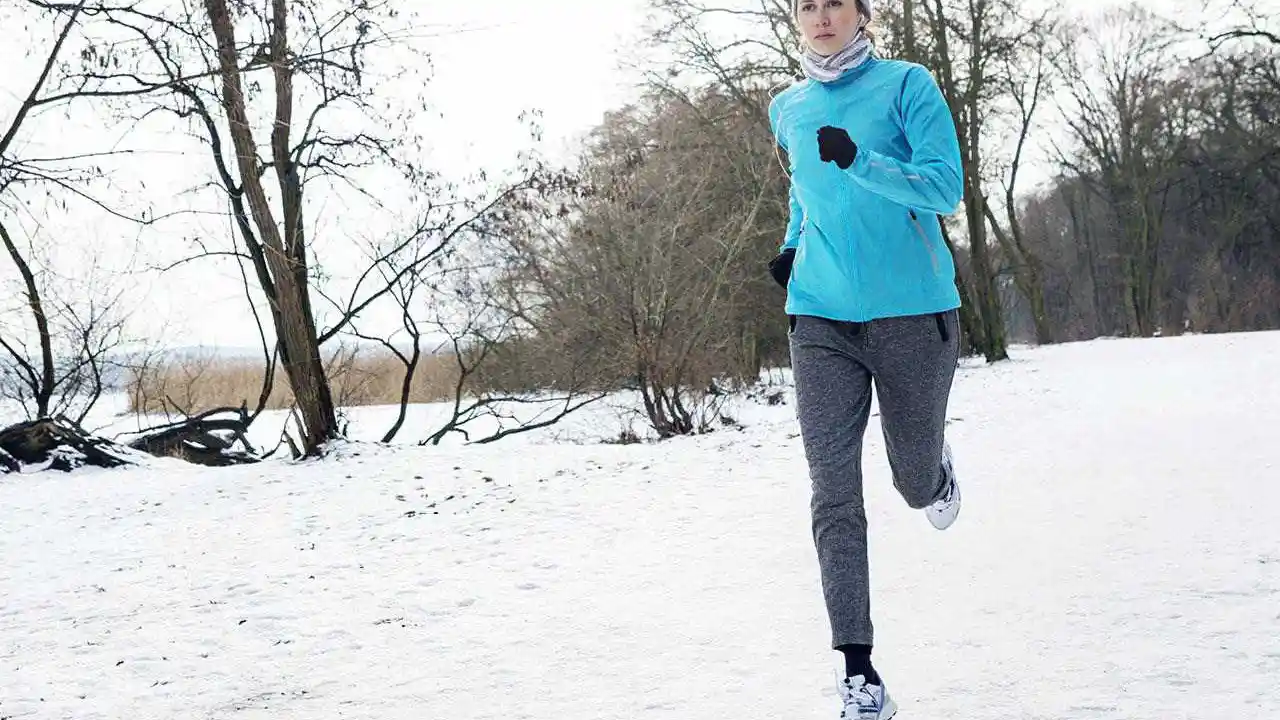
Post Skiing Recovery Tips
Aid your body's recovery after skiing. Stretching, nutrition, and rest tips for muscle soreness.
Understanding Post Skiing Muscle Soreness and Fatigue
So, you've just had an epic day on the slopes, carving up fresh powder or tackling challenging moguls. Your legs feel like jelly, your quads are screaming, and every step is a reminder of the fun you had. This, my friend, is the glorious aftermath of a good ski session: muscle soreness and fatigue. But why does it happen? Well, skiing is a full-body workout, engaging muscles you might not use every day. Think about those constant squats, the quick turns, the absorption of bumps, and the sheer effort of maintaining balance. All of this leads to microscopic tears in your muscle fibers, a process known as Delayed Onset Muscle Soreness (DOMS). It's a normal part of muscle adaptation and growth, but it can definitely put a damper on your next day's plans if not managed properly. Fatigue, on the other hand, is your body telling you it's depleted its energy stores and needs a break. Understanding these two aspects is the first step to effective recovery.
Immediate Post Skiing Recovery Strategies
The moment you click out of your bindings, your recovery process should begin. What you do in the first hour or two after skiing can significantly impact how you feel the next day. First up, hydration. You've been sweating, even if you didn't feel it in the cold air. Replenish those fluids with water or an electrolyte drink. Forget the immediate après-ski beer for a moment; your body needs proper rehydration. Next, refuel your body. Your muscles have used up their glycogen stores, so a good mix of carbohydrates and protein within 30-60 minutes post-skiing is ideal. Think a banana and some yogurt, or a protein bar. This helps kickstart muscle repair and glycogen replenishment. Finally, a gentle cool-down and stretching session. Don't just collapse on the couch. A few minutes of light walking or dynamic stretching can help flush out lactic acid and improve blood flow to your tired muscles. Focus on your quads, hamstrings, glutes, and even your core and shoulders.
Effective Stretching Techniques for Skiers
Stretching is often overlooked, but it's a crucial component of recovery. It helps improve flexibility, reduce muscle stiffness, and can even prevent injuries. Here are some key stretches to incorporate into your post-skiing routine:
- Quad Stretch: Stand tall, grab your ankle, and pull your heel towards your glutes. Keep your knees together. Hold for 30 seconds per leg.
- Hamstring Stretch: Sit on the floor with one leg extended, the other bent with your foot to your inner thigh. Reach for your toes on the extended leg. Hold for 30 seconds per leg.
- Calf Stretch: Lean against a wall, placing one foot back with your heel on the ground. Lean forward until you feel a stretch in your calf. Hold for 30 seconds per leg.
- Glute Stretch (Figure Four): Lie on your back, cross one ankle over the opposite knee, and gently pull the thigh towards your chest. Hold for 30 seconds per side.
- Hip Flexor Stretch: Kneel on one knee, with the other foot flat on the ground in front of you. Gently push your hips forward. Hold for 30 seconds per side.
- Lower Back Twist: Lie on your back, knees bent, feet flat. Let your knees fall to one side while keeping your shoulders on the ground. Hold for 30 seconds per side.
Remember to stretch gently, without bouncing, and only to the point of mild tension, not pain. Consistency is key here.
Nutritional Strategies for Optimal Muscle Repair and Energy Replenishment
What you put into your body is just as important as how you move it. For optimal recovery, focus on a balanced diet rich in macronutrients and micronutrients. Protein is essential for muscle repair and growth. Aim for 20-30 grams of protein in your post-skiing meal. Good sources include lean meats, fish, eggs, dairy, legumes, and protein powder. Complex carbohydrates replenish glycogen stores, giving you energy for the next day. Think whole grains, fruits, and vegetables. Don't shy away from healthy fats, which are important for overall health and hormone production. And don't forget about antioxidants found in colorful fruits and vegetables, which help combat inflammation caused by exercise. Consider incorporating anti-inflammatory foods like turmeric, ginger, and omega-3 fatty acids (found in fatty fish or flaxseed) into your diet. Staying well-hydrated throughout the day, not just after skiing, is also paramount.
The Importance of Rest and Sleep for Recovery
This might be the most underrated aspect of recovery: rest. Your muscles don't repair themselves while you're active; they do it when you're resting, especially during sleep. Aim for 7-9 hours of quality sleep each night, particularly after intense ski days. During deep sleep, your body releases growth hormone, which is vital for tissue repair and muscle growth. If you're planning multiple ski days in a row, consider a 'rest day' where you engage in very light activity or simply relax. Listen to your body; if you're feeling overly fatigued, pushing through might do more harm than good. Naps can also be beneficial if you're feeling particularly drained.
Recovery Tools and Products for Skiers
Beyond the basics, there's a whole world of recovery tools and products that can help speed up your recuperation. Let's dive into some popular options, their uses, and some specific product recommendations.
Foam Rollers and Massage Balls for Myofascial Release
These are fantastic for self-myofascial release, which is essentially a self-massage technique to release muscle tightness and trigger points. They work by applying pressure to specific areas, improving blood flow, and breaking up adhesions in the fascia (the connective tissue surrounding muscles). They're relatively inexpensive and incredibly effective.
- Product Recommendation: TriggerPoint GRID Foam Roller
- Use: Excellent for targeting quads, hamstrings, glutes, IT bands, and back. Its unique grid pattern mimics a masseuse's hand, providing varying levels of pressure.
- Pros: Durable, portable, effective for deep tissue massage.
- Cons: Can be intense for beginners.
- Price: Around $35-$50 USD.
- Product Recommendation: Therabody TheraCane Massager
- Use: Perfect for reaching those tricky spots like your upper back, shoulders, and neck that a foam roller might miss.
- Pros: Ergonomic design, allows for precise pressure application.
- Cons: Can be awkward to use initially.
- Price: Around $30-$40 USD.
Compression Gear for Enhanced Circulation
Compression socks, sleeves, and tights are designed to apply graduated pressure to your limbs, which can help improve blood circulation, reduce muscle oscillation (which contributes to fatigue), and potentially speed up the removal of metabolic waste products. Many athletes swear by them for both performance and recovery.
- Product Recommendation: CEP Ski Touring Compression Socks
- Use: Worn during or after skiing to reduce swelling, improve blood flow, and support calf muscles.
- Pros: High-quality material, comfortable fit, durable, specifically designed for ski boots.
- Cons: Can be a bit pricey.
- Price: Around $50-$65 USD.
- Product Recommendation: 2XU Compression Tights
- Use: Full leg compression for overall muscle support and recovery. Great for wearing after a long day or even overnight.
- Pros: Excellent muscle containment, breathable fabric, wide range of sizes.
- Cons: Can feel restrictive for some.
- Price: Around $80-$120 USD.
Percussion Massage Guns for Deep Tissue Relief
These handheld devices deliver rapid bursts of pressure into muscle tissue, providing a deep tissue massage that can help release knots, increase blood flow, and reduce soreness. They've become incredibly popular among athletes for their effectiveness and convenience.
- Product Recommendation: Theragun PRO
- Use: Professional-grade deep muscle treatment. Ideal for serious skiers or those with chronic muscle tightness. Comes with multiple attachments and adjustable speeds.
- Pros: Powerful, quiet, long battery life, highly effective for deep knots.
- Cons: Expensive, can be bulky.
- Price: Around $399-$599 USD.
- Product Recommendation: Hyperice Hypervolt GO 2
- Use: A more compact and portable option for on-the-go relief. Great for travel or quick sessions.
- Pros: Lightweight, quiet, good power for its size, more affordable.
- Cons: Less powerful than the PRO model, fewer attachments.
- Price: Around $129-$199 USD.
Epsom Salt Baths for Muscle Relaxation
A classic for a reason! Epsom salts (magnesium sulfate) are believed to be absorbed through the skin, helping to relax muscles, reduce inflammation, and replenish magnesium levels, which are crucial for muscle function. A warm bath itself is also incredibly soothing.
- Product Recommendation: Dr Teal's Pure Epsom Salt Soaking Solution
- Use: Add 2 cups to a warm bath and soak for at least 20 minutes.
- Pros: Affordable, widely available, effective for muscle relaxation.
- Cons: Effects are temporary.
- Price: Around $5-$10 USD per bag.
Topical Pain Relief Creams and Gels
These can provide localized relief for sore muscles and joints. Many contain ingredients like menthol, camphor, or capsaicin to create a warming or cooling sensation that distracts from pain and can increase blood flow to the area.
- Product Recommendation: Biofreeze Pain Relief Gel
- Use: Apply directly to sore muscles or joints for a cooling, pain-relieving sensation.
- Pros: Fast-acting, non-greasy, widely used by physical therapists.
- Cons: Strong menthol smell, temporary relief.
- Price: Around $10-$20 USD.
- Product Recommendation: Tiger Balm Red Extra Strength
- Use: A warming balm for deep muscle aches and pains.
- Pros: Very effective for deep, persistent soreness, long-lasting warmth.
- Cons: Strong smell, can be intense for sensitive skin.
- Price: Around $8-$15 USD.
Portable Ice Baths or Cold Therapy Devices
While not for everyone, cold therapy (like ice baths or cold showers) can help reduce inflammation and muscle soreness by constricting blood vessels and then allowing fresh, oxygenated blood to rush back into the muscles once the cold is removed. It's a favorite among elite athletes.
- Product Recommendation: The Plunge Cold Plunge Tub (Home Use)
- Use: A dedicated cold plunge tub for consistent cold therapy at home.
- Pros: Convenient, precise temperature control, highly effective for recovery.
- Cons: Very expensive, requires space.
- Price: Starts around $4,990 USD.
- Product Recommendation: Reusable Gel Ice Packs (Basic Option)
- Use: Apply to specific sore areas for targeted cold therapy.
- Pros: Affordable, easy to use, versatile.
- Cons: Less comprehensive than a full plunge, requires freezer space.
- Price: Around $10-$20 USD for a set.
Advanced Recovery Techniques and Therapies
For those looking to take their recovery to the next level, or if you're dealing with persistent soreness, there are several advanced techniques and therapies worth exploring.
Sports Massage for Deep Muscle Work
A professional sports massage can do wonders for releasing deep muscle knots, improving circulation, and reducing stiffness. A skilled therapist can identify and work on specific problem areas that self-massage might miss. It's an investment, but often well worth it, especially after a multi-day ski trip.
Cryotherapy for Whole Body Inflammation Reduction
Whole-body cryotherapy involves spending a few minutes in a chamber cooled to extremely low temperatures (often below -100°C). The extreme cold is believed to reduce inflammation, alleviate pain, and boost recovery. It's a quick session, but definitely an intense experience.
Infrared Saunas for Heat Therapy and Detoxification
Unlike traditional saunas, infrared saunas use infrared light to directly heat your body, penetrating deeper into tissues. This can promote relaxation, increase circulation, reduce muscle soreness, and aid in detoxification through sweating. Many people find them incredibly relaxing and beneficial for overall well-being.
Acupuncture and Dry Needling for Targeted Relief
These therapies involve inserting thin needles into specific points on the body (acupuncture) or into trigger points within muscles (dry needling). Both aim to relieve pain, reduce muscle tension, and promote healing by stimulating the body's natural recovery processes. They can be particularly effective for localized pain or persistent muscle issues.
Preventative Measures for Future Ski Sessions
The best recovery is often about prevention. Here are some tips to minimize soreness and fatigue before you even hit the slopes:
- Pre-Season Conditioning: Start preparing your body weeks or months before your ski trip. Focus on strengthening your quads, hamstrings, glutes, and core. Incorporate exercises like squats, lunges, planks, and balance drills.
- Warm-Up Properly: Before your first run, do a dynamic warm-up. Light cardio, leg swings, arm circles – get your blood flowing and muscles ready.
- Pace Yourself: Don't try to ski bell-to-bell on your first day back, especially if you haven't skied in a while. Start with shorter runs, take breaks, and gradually increase your intensity.
- Stay Hydrated During the Day: Carry a water bottle and sip throughout the day, even on the lift.
- Listen to Your Body: If you're feeling tired, take a break. Push too hard, and you risk injury or excessive soreness that ruins the rest of your trip.
By combining smart recovery strategies with preventative measures, you'll be able to enjoy more days on the mountain, feel better, and perform at your best. Happy skiing!
:max_bytes(150000):strip_icc()/277019-baked-pork-chops-with-cream-of-mushroom-soup-DDMFS-beauty-4x3-BG-7505-5762b731cf30447d9cbbbbbf387beafa.jpg)






